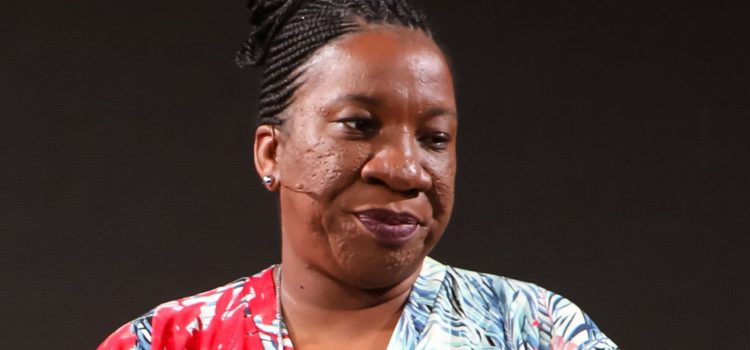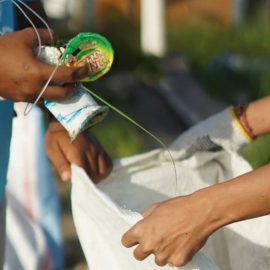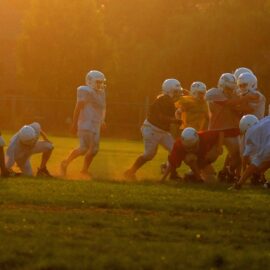

This article is an excerpt from the Shortform book guide to "Unbound" by Tarana Burke. Shortform has the world's best summaries and analyses of books you should be reading.
Like this article? Sign up for a free trial here.
Who is Tarana Burke? What was Burke’s childhood like?
Burke’s involvement in anti-sexual violence activism is rooted in her own experience of childhood sexual abuse. In her book Unbound, she briefly describes how her victimization and other experiences inspired a deep-seated sense of shame.
Let’s look at the experiences that encouraged her to start the “me too” movement.
Burke’s Experience of Childhood Sexual Abuse
Who Is Tarana Burke, and what was her childhood like? Burke says the first time she was sexually assaulted, she was seven years old—too young to understand what was happening to her. When she was playing outside, an older boy who lived in her neighborhood led her out of her parents’ sight, penetrated her, and ejaculated on her (she thought he urinated). Then, beginning at age nine, she was molested by a different boy in her neighborhood. He took photos of the abuse and used them to blackmail her into submission, which worked until a painful encounter (he knocked against the cast on her broken leg) spurred Burke to fight back and steal his camera at the age of 12.
The abuse Burke endured made her feel humiliated and frightened, but she didn’t tell anyone what happened for two reasons. First, she felt that she had done something wrong and would get into trouble if she disclosed the assault. Burke explains that she had been taught not to let anyone touch her genitals, but she didn’t understand that this advice was intended as a warning about sexual violence. She blamed herself for allowing someone to touch her, even though she didn’t have a choice. This led her to develop a deep sense of shame and conclude that she was a bad person. As a result, she often falsely confessed sins at her Catholic school, contriving opportunities to repent for what she considered truly sinful (her victimization).
Second, Burke worried that her stepfather would go to prison for hurting the boys who abused her. Burke describes her stepfather as a respected authority figure in her neighborhood, and she’d seen him become violent with others who harmed people in their community. Since they were family, this possibility seemed even more likely. When Burke stole her abuser’s camera and ran away from him, she ran into an elderly neighbor who guessed what had happened. This neighbor told Burke not to tell her stepfather about the abuse because he was too valuable a part of the community to lose to prison, reinforcing Burke’s silence. (Later, her stepfather went to prison for an unrelated reason, and Burke says she inexplicably felt she was to blame.)
Other Sources of Burke’s Shame
Burke explains that in addition to the sexual abuse she suffered as a child, two other major forces influenced her strong sense of shame. First, by the age of 12, she believed she was ugly due to strangers’ unkind stares and comments about her appearance. Burke explains that the notion that she’s ugly is rooted in anti-Black beauty standards—she describes herself as having a large nose, full lips, and dark skin, features that are often stigmatized. She was raised to love being Black, but the callous comments she received still took a toll on her. She didn’t just believe that she was ugly—she believed that because she was ugly, she deserved cruel treatment.
The second force that contributed to Burke’s pervasive feelings of shame was her mother’s tendency to yell at and humiliate her for minor infractions. For example, as a child, Burke once wondered what dish soap tasted like and touched a used dishrag to her tongue to find out. Her mother saw her, became furious, and berated her by suggesting she was a disgusting dishrag.
Later, when Burke had consensual sex for the first time as a teenager, her mother found out about it by reading her diary and responded in an angry, judgmental way, which made Burke feel ashamed. She also forced Burke to see a gynecologist and get tested for sexually transmitted infections, which was painful and retraumatizing. Burke says that by treating her this way, her mother confirmed her belief that she was inherently flawed and unworthy of love.
A Boon to Burke’s Shame
Although shame permeated her childhood, Burke eventually found a bit of relief from that feeling. When she was 12, she read renowned poet Maya Angelou’s autobiography, I Know Why the Caged Bird Sings, which depicts Angelou’s experience of childhood sexual abuse. Burke says empathizing with Angelou, whom she viewed as blameless and undeserving of the abuse, taught her three things: First, she wasn’t alone—other girls experienced sexual abuse, too. Second, the abuse wasn’t her fault. Third, the abuse didn’t have to hold her back—Angelou’s life journey demonstrated that it was possible for a Black girl who’d been sexually abused to grow into a self-assured, graceful, and successful adult.
(Shortform note: As in Burke’s life story, Angelou’s silence about sexual violence was a central theme in her autobiography: After she testified against the man who abused her, he was murdered. The guilt Angelou felt over his death caused her to stop speaking aloud for several years, until she started reading poetry at age 13. Angelou’s autobiography is commonly cited as a source of healing and inspiration for survivors of sexual violence: Television producer Oprah Winfrey, for example, says that reading it gave her the words she needed to describe her own experience of childhood sexual abuse. Studies affirm that exposure to resilient role models like Angelou can give children who’ve experienced hardship greater hope for the future.)

———End of Preview———
Like what you just read? Read the rest of the world's best book summary and analysis of Tarana Burke's "Unbound" at Shortform.
Here's what you'll find in our full Unbound summary:
- The origin of the viral phrase “me too”
- What Tarana Burke did to heal from the experience of childhood sexual abuse
- The story of the #MeToo movement






